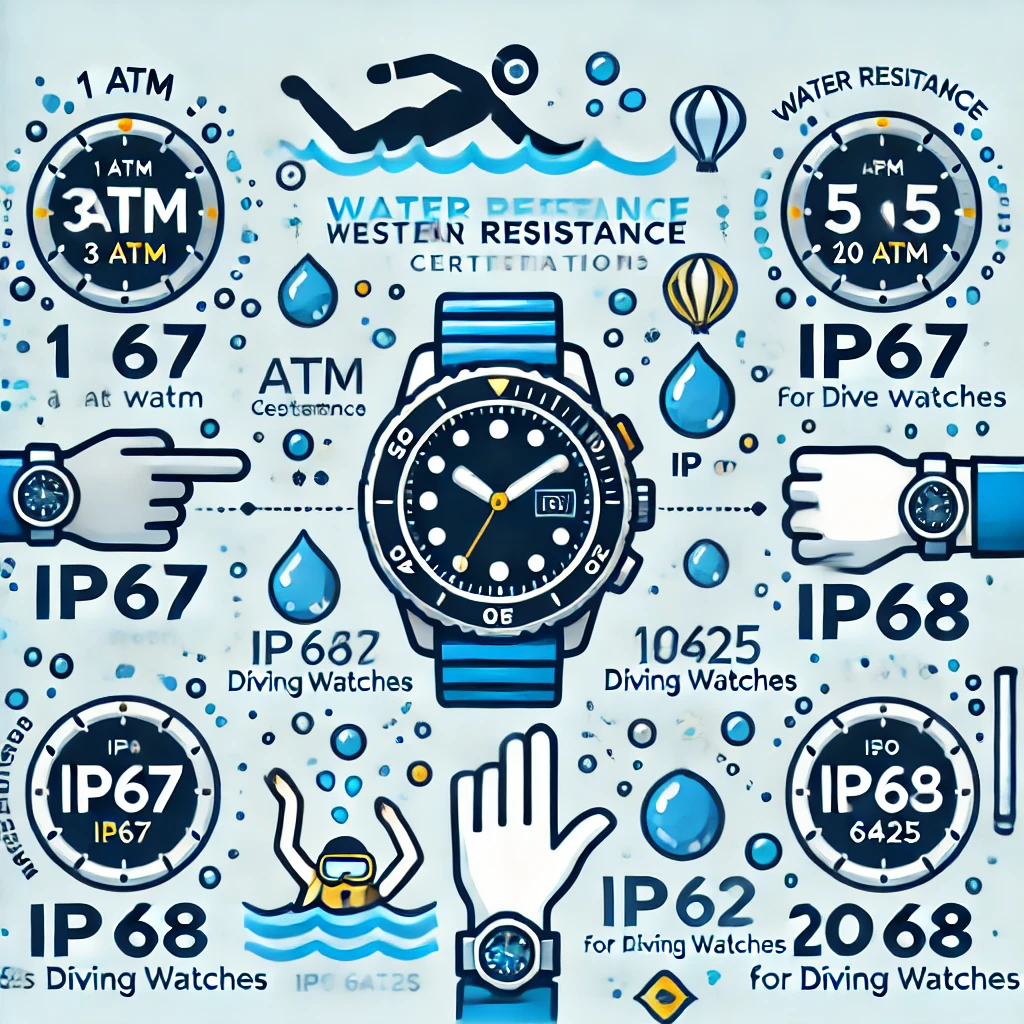


Types of Water Resistance Certifications and Their Differences
Water resistance is a key feature in smartwatches, smartphones, and other electronic devices. Various standards define the level of protection against water under specific conditions. Here’s a breakdown of the most common water resistance certifications:
1.
ATM (Atmospheres) Standard
Commonly used for watches and wearables
This standard measures water pressure resistance in "atmospheres" (ATM). Each 1 ATM equals the pressure at a depth of 10 meters underwater. However, this does not mean the device is safe to use at that depth, as real-world conditions vary.
✅ Note: ATM ratings are tested in static conditions. Movement in water, pressure fluctuations, and temperature changes may impact water resistance.
2.
IP (Ingress Protection) Rating
Used for smartphones, smartwatches, and electronic devices
The IP rating indicates a device’s resistance to dust and water. It consists of two digits, such as IP67 or IP68:
Common IP Water Resistance Ratings:
✅ Note: IP68 is one of the best ratings for smartphones and smartwatches, offering strong dust and water resistance.
3.
ISO 6425 Certification (For Diving Watches)
Watches with this certification undergo special tests for high-pressure resistance, shock durability, and temperature changes. If a watch is labeled Diver’s Watch, it has passed ISO 6425 standards.
Categories under ISO 6425:
✅ Note: A high ATM rating alone does not guarantee a watch is suitable for diving unless it has ISO 6425 certification.
|
Standard |
Water Resistance Level |
Suitable For |
||||
|
IP67 |
Temporary immersion in water (up to 1m) |
Daily use, rain, sweat |
||||
|
IP68 |
Longer immersion in water |
Swimming, showers |
||||
|
3 ATM |
Splash and sweat resistance |
Handwashing, rain |
||||
|
5 ATM |
Swimming in shallow water |
Pools, light water activities |
||||
|
10 ATM |
Swimming and high-motion water activities |
Light diving |
||||
|
|
Scuba diving
|
Tips to Maintain Water Resistance
Conclusion
If your device is designed for daily use and sports, IP68 or 5 ATM certification is sufficient. However, for diving, you need ISO 6425 Diver’s Watch certification. Always check the manufacturer’s specifications, as depth and duration limitations vary by model.
🔹 ATM measures water pressure but does not guarantee real-world waterproofing.
🔹 IP68 is suitable for temporary immersion but not for prolonged swimming or diving.
🔹 ISO 6425 is the best option for deep and professional diving.